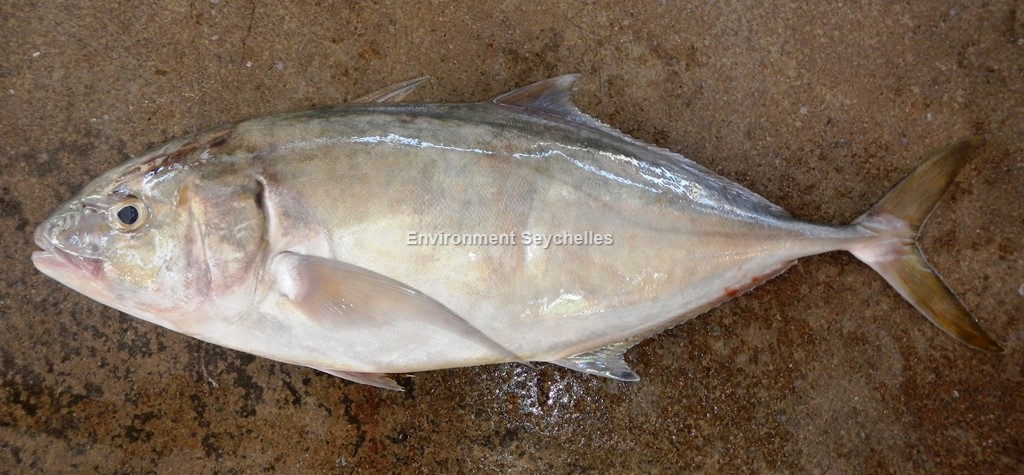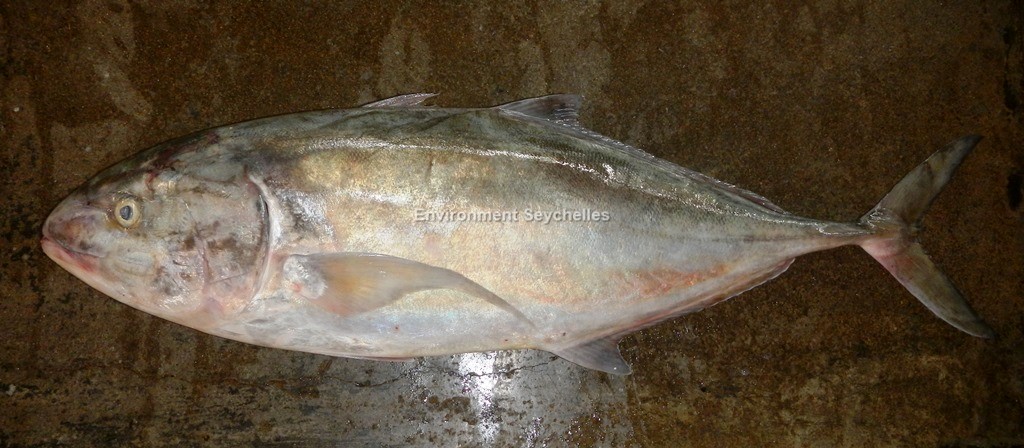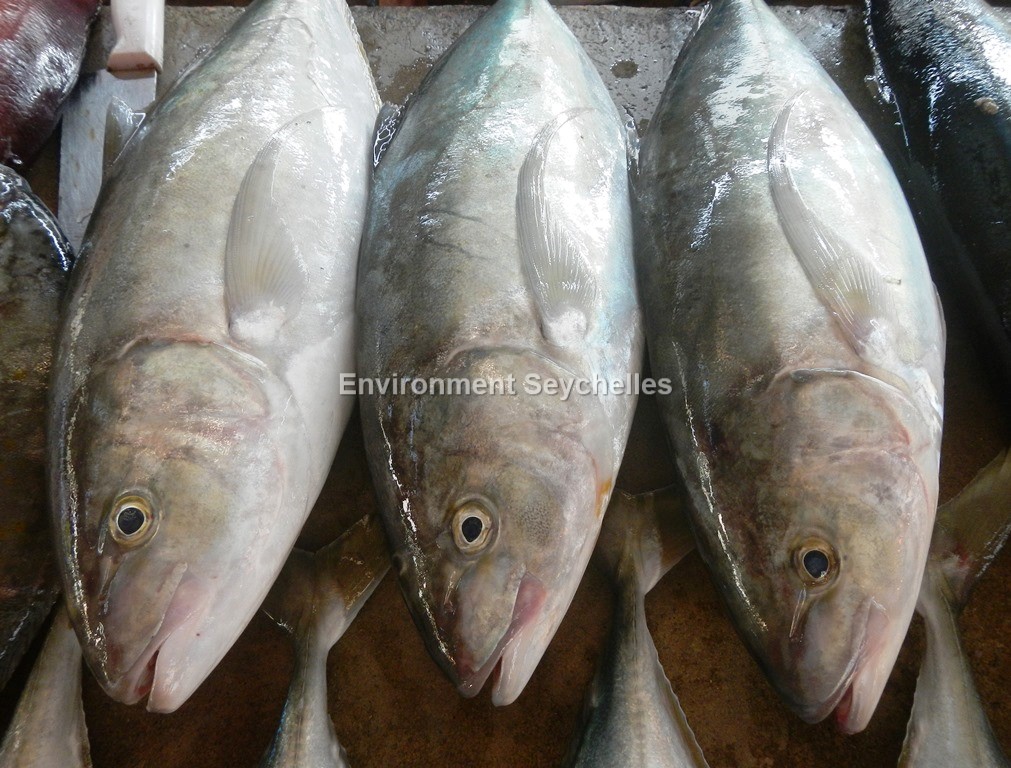Description:
Dorsal spines: 9; Dorsal rays: 28-32; Anal spines: 3; Anal rays: 25-26.
Body ovate and compressed, becoming elongate-ovate and slightly subcylindrical with age. Profile of head and nape gently convex becoming less steep with age. Both jaws with
bands of villiform teeth. Lateral line with a low regular arch, junction to straight section below vertical from between sixteenth to twentieth dorsal fin soft rays. Naked
area on breast extending up to, but not above, pectoral fin base.
Colour: A green to bluish-green trevally becoming silver below, with or without small golden to dark orange spots on the flanks. Opercular spot dusky and inconspicuous.
Juveniles to 200 mm are silver to silvery-green with a few scattered golden spots on the side. Olive green dorsal, anal and caudal fins, and often white tips on the soft
dorsal and anal fins. Pelvic and pectoral fins pale green to hyaline.
Size:
Maturity: Lm unknown. Range unknown. Max length: 90.0 cm TL.
Habitat and Ecology:
Inhabits deep offshore reefs to 100m depth. Larger individuals tend to be solitary, while juveniles form small schools. Its diet consists of small invertebrates and fishes.
Fishery Status:
This species is not protected or subject to fishery regulations. It is caught in the hand line fishery where it is a regular and abundant component of the catch. It is also
caught in the net fishery. It is an economically important species. Carangidae typically make up 30 to 45% of the annual artisanal catch by weight. C. gymnostethus is the
single largest contributor by weight to the catch.
Notes:
References:
Bray, D.J. (2017). Carangoides gymnostethus in Fishes of Australia, http://fishesofaustralia.net.au/home/species/4262 (18/05/19)
Fischer, W. & G. Bianchi (eds), (1984). FAO species identification sheets for fishery purposes. Western Indian Ocean; (Fishing Area 51). Prepared and printed with the
support of the Danish International Development Agency (DANIDA). Rome, Food and Agricultural Organization of the United Nations, vols 1-6: pag. var.
Froese, R. & D. Pauly. Eds. (2022). FishBase. https://www.fishbase.de/summary/Carangoides-gymnostethus.html (22/06/22).
Smith-Vaniz, W.F. & Williams, I. (2016). Carangoides gymnostethus (errata version 2017). The IUCN Red List 2016: http://dx.doi.org/10.2305/IUCN.UK.2016-3.RLTS.T20429774A46664074.en. (18/05/19).
Van Der Elst, R. (2012). A Guide to the Common Sea Fishes of Southern Africa. Struik Nature, Cape Town, South Africa. ISBN: 978 1 86825 394 4
Citation:
Nevill, J.E.G. (2019). Carangoides gymnostethus, Bludger. Seychelles Seatizens. www.seatizens.sc https://seatizens.sc/species/carangoides-gymnostethus-cuvier-1833/ (edited 22/06/22).




There are no comments